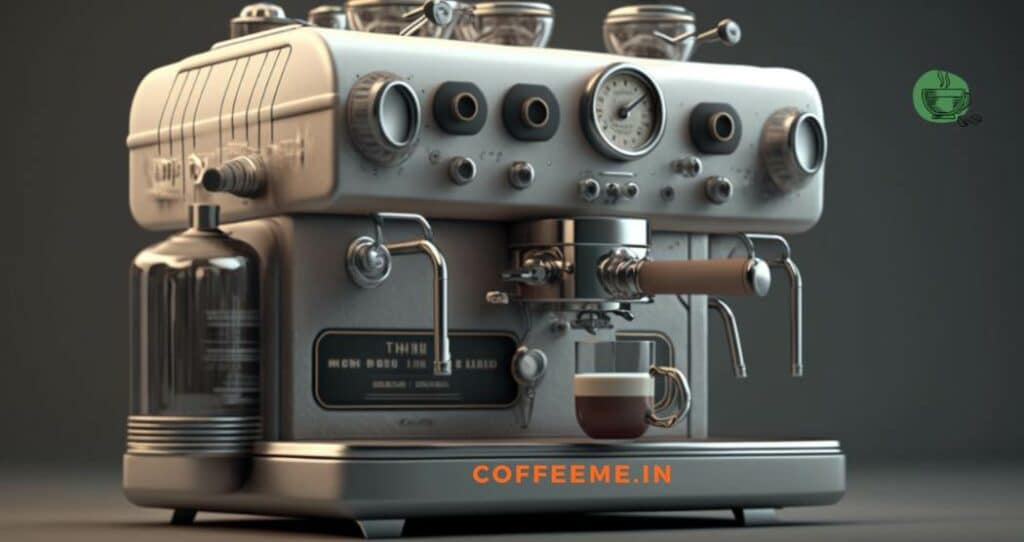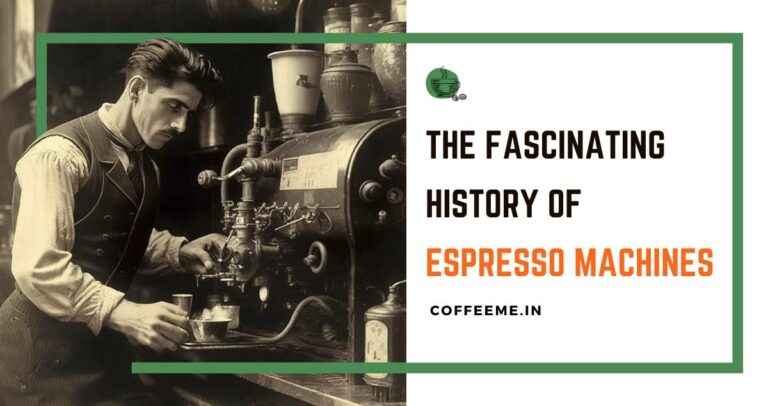As a coffee enthusiast and avid espresso drinker, I’ve had the pleasure of exploring the rich history of espresso machines and their evolution over time.
In this article, I’ll take you on a journey through the fascinating story of the espresso machine, from its humble beginnings to the modern-day designs that we know and love.
The early days of espresso
It’s hard to imagine a time when espresso wasn’t readily available. Still, just over a century ago, the only way to get your caffeine fix was through a long and laborious brewing process.
That changed in Italy in the early 20th century when the first manual lever espresso machines were introduced.
These machines, which relied on the user’s arm strength to force hot water through a bed of finely ground coffee, produced a concentrated and aromatic shot of espresso in just a matter of seconds.
I remember my first experience with a manual lever espresso machine like it was yesterday.
I was on a trip to Italy and stumbled upon a tiny café in Rome that looked like it hadn’t changed in decades.
The barista, a fierce but friendly man with a thick Italian accent, pulled me a shot of espresso from a beautiful vintage lever machine.
The taste was unlike anything I had ever experienced before – rich, complex, and full of flavor. I was hooked.
The invention of the steam-powered espresso machine
While manual lever machines were undoubtedly an improvement over traditional coffee brewing methods, they had their limitations.
When Luigi Bezzera invented the steam-powered espresso machine in 1901, espresso became a game-changer.
These machines used steam pressure to force water through the coffee grounds, producing a thicker and more consistent shot of espresso.
But the steam-powered espresso machine took off when Desiderio Pavoni improved Bezzera’s original design in 1905. Pavoni’s machine featured a pressure gauge and a steam wand for frothing milk, allowing even more control over the brewing process and creating other popular espresso drinks like cappuccinos and lattes.
I can still remember the first time I used a steam-powered espresso machine.
It was at a local coffee shop that had just opened up in my neighborhood, and I was blown away by how quickly and effortlessly the barista was able to create a perfect shot of espresso.
The machine itself was a beautiful work of art, with its gleaming brass and copper accents and intricate steam gauges.
It was then that I started to understand why my Italian father always talked down on the American coffee pot (see my about section for that story).
The Rise of Automatic Espresso Machines
As the popularity of espresso grew, so did the demand for machines that could produce it quickly and efficiently.
This led to the development of automatic espresso machines in the 1940s, which used electric pumps to force water through the coffee grounds.
With the press of a button, baristas could now produce multiple espresso shots in a matter of seconds, and the consistency of the shots was vastly improved.
However, it was in the 1970s that automatic espresso machines really took off.
A Swiss company named Thermoplan introduced the first super-automatic espresso machine, which could grind, tamp, and brew espresso shots all in one automated process.
This was a game-changer for the coffee industry, allowing even inexperienced baristas to produce high-quality espresso drinks consistently and quickly.
The transition from manual to automatic espresso machines was something espresso lovers remember well. At first, people were skeptical of the new machines – it seemed like they took some of the art and craft out of making espresso.
But as time went by, coffee lovers realized that automatic machines had their unique advantages. They allowed us to serve more customers quickly, and the consistency of the shots was much better than what we could achieve with manual machines.

Modern Espresso Machines
Today, espresso machines have come a long way since their early days.
There are now countless variations and designs to choose from, each with its unique features and advantages.
One of the most notable innovations in modern espresso machines is high-pressure water pumps, which allow for greater control over the brewing process and more consistent results.
Another recent trend in the coffee industry is the rise of Third-Wave Coffee shops, prioritizing the quality and origin of the coffee beans over the machines used to brew them.
These shops often use a manual lever or semi-automatic machines to create a more artisanal and personalized experience for their customers.
As for me, I’m still a fan of the classic steam-powered espresso machine. There’s something about the hiss of the steam and the smell of freshly ground coffee that takes me back to that little café in Rome where I first fell in love with espresso.
But whether you prefer manual, automatic, or super-automatic machines, there’s no denying the impact that espresso machines have had on the coffee industry and our daily lives.
The Future of Espresso Machines
As we look toward the future, it’s clear that espresso machines will continue to evolve and improve.
One area of focus is sustainability – many coffee companies are now developing machines that use renewable energy sources or have a smaller carbon footprint.
There’s also a growing interest in using artificial intelligence and data analytics to optimize the brewing process and produce even better espresso shots.
Another trend is the rise of home espresso machines.
In the past, espresso machines were mostly limited to coffee shops and restaurants. Still, nowadays, it’s easier than ever for coffee lovers to bring the café experience into their own homes.
With a wide range of high-quality, affordable espresso machines available, it’s now possible to create café-quality espresso drinks without leaving the comfort of your own kitchen.
The History of Espresso Machines – Conclusion
In conclusion, the history of espresso machines is a fascinating and complex story that spans over a century of innovation and invention.
From the early steam-powered machines to the fully automated super-automatic models of today, espresso machines have played a crucial role in the growth and evolution of the coffee industry.
As a coffee lover and former barista, I sincerely appreciate the art and science of espresso.
Whether it’s a shot of espresso to start the day or a latte to enjoy with friends, espresso drinks have become an integral part of our daily lives.
And as technology continues to advance, I have no doubt that espresso machines will continue to play a key role in shaping the future of coffee.



